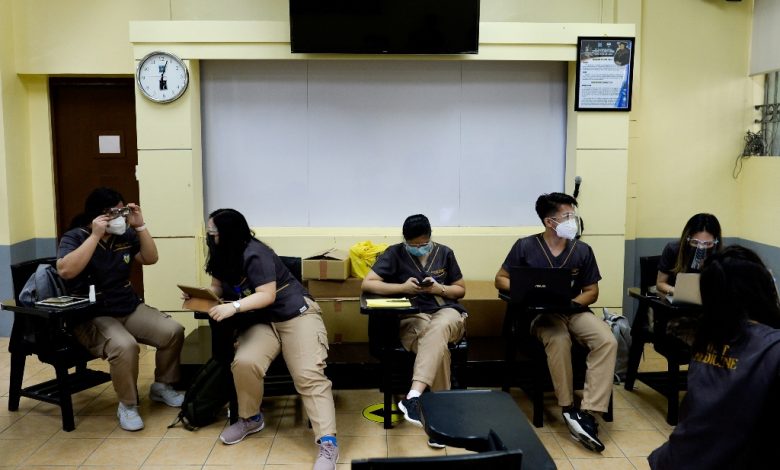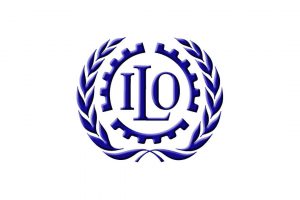Philippines lags in attracting top talent

By Revin Mikhael D. Ochave, Reporter
THE Philippines dropped nine spots in an annual global ranking of countries’ ability to attract and retain a skilled workforce, as the coronavirus pandemic disrupted the education of millions of young Filipinos.
In the IMD World Talent Ranking 2021 report released on Thursday, the Philippines ranked 57th out of 64 economies, down nine places from 48th (out of 63) in 2020.
“The IMD World Talent Ranking assesses the extent to which an economy develops its domestic talent pool while tapping into the overseas pipeline so as to be able to satisfy the market’s demands for talent,” the IMD World Competitiveness Center, which conducted the research, said.
The IMD rankings are based on three factors: “appeal” or the extent to which an economy attracts foreign and retains local talent, “investment and development” which refers to the measurement of resources allotted to develop a homegrown workforce, and “readiness” or the quality of the skills in the country’s talent pool.
The latest report showed the Philippines remained near the bottom at 62nd place (from 61st last year) in terms of “investment and development.”
“The main factors affecting the Philippines’ performance in investment and development are the effective implementation of apprenticeship programs, the quality of education (measured as pupil-teacher ratio, primary and secondary schools), and the effectiveness of the healthcare system,” IMD World Competitiveness Center told BusinessWorld via e-mail.
The Philippines ranked 60th in terms of total public expenditure on education per student at $475. Its pupil-teacher ratios for both primary (25.78 students to teacher) and secondary education (25.19 students to teacher) ranked 60th and 59th place, respectively. Public expenditure on education stood at 3.5% of GDP (52nd place).
In terms of “readiness,” the Philippines ranked 47th (from 33rd spot in 2020), thanks to its strengths such as readily available skilled labor (9th), competent senior managers (17th), and language skills (21st).
“In terms of readiness, the capacity of the university and management education to meet talent demands as well as the percentage of student graduating in sciences and student mobility inbound are among the factors affecting the Philippines’ performance,” IMD said.
It also flagged the Philippines’ scores from the Programme for International Student Assessment (PISA) survey of 15-year-old students’ scholastic performance on mathematics, science, and reading.
The Philippines fell to the 43rd place from 31st spot a year ago in terms of “appeal,” which the IMD said was due to the cost of living and low levels of motivation among the workforce.
According to IMD’s talent ranking website, the Philippines this year faced challenges such as ensuring inclusive economic recovery, reviving businesses and consumer confidence, and establishing resilient social infrastructure, especially in health and education.
Sought for comment, University of Asia and the Pacific (UA&P) Senior Economist Cid L. Terosa said via e-mail that the decline in the country’s ranking can be attributed to the “relatively” weak government investment and support for the education sector.
“Among the 64 countries included in the ranking, the country’s total public expenditure on education per student is the fifth lowest. The inability of the government to spend more on education has partly contributed to the low ranking of the country in terms of pupil-teacher ratio for both primary and secondary education as well as educational assessment,” Mr. Terosa said.
“I think the onslaught of the coronavirus disease 2019 (COVID-19) pandemic last year has made it difficult for the government to allocate more resources to the education sector and to support the transition to alternative modes of learning and instruction,” he added.
Further, Mr. Terosa said the lower ranking will have implications on the Philippines’ economic recovery, since the “talents, education, skills, and training of Filipinos will determine whether more of them will be productively employed in the new normal.”
Mr. Terosa said it is unlikely the Philippines’ ranking will improve considerably next year, given the challenges brought by the pandemic and the transition to a new administration.
Calixto V. Chikiamco, Foundation for Economic Freedom (FEF) president, said in a mobile phone message that the country’s ranking might even slide next year because it is one of the last countries to conduct face-to-face classes.
“The decline in the country’s performance in various education and competency tests — it placed last in the PISA rankings on math and science competency — may account for the low rankings in global talent,” Mr. Chikiamco said.
“Moreover, due to the unaffordability and lack of broadband, many schoolchildren couldn’t even do remote learning,” he added.
University of the Philippines Professor Emeritus Rene E. Ofreneo said in an e-mail interview that the results are not surprising following the prolonged lockdowns due to the COVID-19 pandemic.
“The educational system was not ready. We are plagued with problems about poor internet connection, lack of quality modular materials, lack of quality teachers, and other readiness issues,” Mr. Ofreneo said.
Makati Business Club Executive Director Coco Alcuaz, Jr. said in a Viber message that the government, schools, and private sector should work harder in strengthening the country’s present and future workforce.
“Even if we execute pandemic recovery, infrastructure programs, and other policies and programs, without a strong workforce, we will have a harder time competing in the more competitive, more knowledge-based economy of the future,” Mr. Alcuaz said.
“We have a lot of catch-up to do. Hopefully, the candidates and the next administration put more effort here,” he added.
Meanwhile, Switzerland remained on top of the World Talent Ranking report, which IMD said reflected the widening gap between workers in “talent-strong” economies and a brain drain in others.
European countries dominated the rankings, with the top 10 all from the region. Sweden ranked second, followed by Luxembourg, Norway, Denmark, Austria, Iceland, Finland, Netherlands and Germany.
The Philippines lagged behind other Asian countries in the list. Hong Kong had the highest ranking (11th), followed by Singapore (12th), Taiwan (16th), Malaysia (28th), South Korea (34th), China (36th) and Japan (39th), Thailand (43rd), and Indonesia (50th).
“This has consequences for leadership responsibilities, as it’s clear that talent attraction and retention is no longer just a policy issue. It’s also the responsibility of senior executives who need to realize their role in boosting worker motivation, which is not just driven by external factors such as salary, safety, or quality of life, but also by the opportunities leaders can provide for workers to reskill, to work flexibly, and to have the use of the best tech at their fingertips,” Arturo Bris, director of the IMD World Competitiveness Center, said in a statement.




